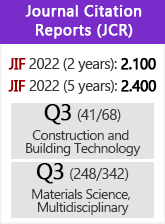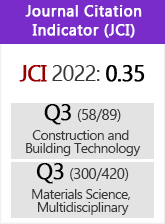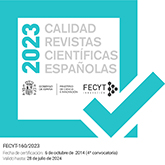Use of the microcrystalline limestone as building material: the "GrisPulpis"case
DOI:
https://doi.org/10.3989/mc.2005.v55.i277.177Keywords:
ornamental rocks, limestone, durability, physical properties, microstructure, petrographyAbstract
Gris Pulpis is a Jurassic microcrystalline limestone found in the Maestrazgo Area of the Iberian Mountain Range (province of Castellón, Spain). This paper reports the results of a detailed study of the mineralogical, pelrographic and chromatic characteristics, as well as the durability, of this stone, classified as a commercial marble for its polish ability. The study determined the relationship between the structural characteristics of the stone, with a proliferation of stylolites and veins, and its physical properties. Its flexura I strength was found to be greater than would normally be expected in a structure with such a dense web of stylolites and veins. This is due to the structural and mineralogical properties of these stylolites, characterised by an extremely wavy design, scant mineral infillings and, occasionally, subsequent cementation. The characteristics of the porous media of homogeneous microcrystalline limestones such as Gris Pulpis largely explain the durability of this stone when exposed to freeze-thaw cycles and salt crystallisation. These arc the properties that make Gris Pulpis limestone, quarried in the Spanish Region of Valencia, a valuable building material for both architectural and civil engineering applications
Downloads
Download data is not yet available.
Downloads
Published
2005-03-30
How to Cite
García del Cura, M. A., Benavente, D., Bernabéu, A., Fort, R., La Iglesia, A., & Ordonez, S. (2005). Use of the microcrystalline limestone as building material: the "GrisPulpis"case. Materiales De Construcción, 55(277), 5–24. https://doi.org/10.3989/mc.2005.v55.i277.177
Issue
Section
Research Articles
License
Copyright (c) 2005 Consejo Superior de Investigaciones Científicas (CSIC)

This work is licensed under a Creative Commons Attribution 4.0 International License.
© CSIC. Manuscripts published in both the printed and online versions of this Journal are the property of Consejo Superior de Investigaciones Científicas, and quoting this source is a requirement for any partial or full reproduction.All contents of this electronic edition, except where otherwise noted, are distributed under a “Creative Commons Attribution 4.0 International” (CC BY 4.0) License. You may read here the basic information and the legal text of the license. The indication of the CC BY 4.0 License must be expressly stated in this way when necessary.
Self-archiving in repositories, personal webpages or similar, of any version other than the published by the Editor, is not allowed.

















